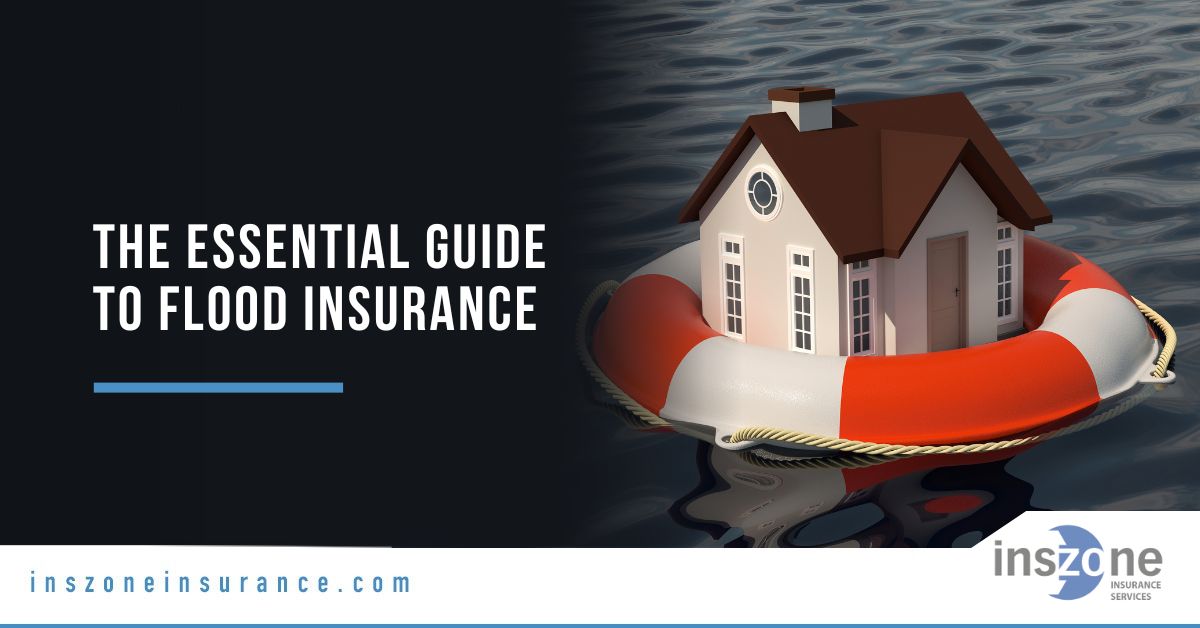Flooding remains one of the most common and devastating natural disasters in the United States, costing property owners billions of dollars in damage every year. Even a few inches of water can destroy flooring, walls, and electrical systems. Unfortunately, most homeowners learn too late that their standard insurance policy doesn’t cover flood damage.
This guide breaks down everything you need to know — how flood insurance works, what it covers, who needs it, and how to make sure your property is properly protected.
Why Flood Insurance Matters
A flood can occur anywhere. Heavy rainfall, melting snow, hurricanes, and drainage issues can all lead to significant property damage in a matter of hours. The financial recovery from a flood is often overwhelming, and without coverage, homeowners face the full cost of repairs alone.
Flood insurance gives property owners a financial safety net. It helps you recover faster, rebuild stronger, and protect the value of your home or business against one of nature’s most unpredictable forces.
Understanding Flood Risk
Many people assume they’re safe if they don’t live near a coastline or river. However, FEMA reports that more than 25% of flood claims come from areas outside designated high-risk zones. Changes in weather, aging infrastructure, and new construction can all shift water flow patterns.
You can assess your property’s flood risk by reviewing FEMA’s Flood Map Service Center or by consulting a licensed insurance agent. Even if your home is in a “low-risk” zone, it’s still wise to consider protection.
What Homeowners Insurance Doesn’t Cover
A standard homeowners insurance policy will not cover flood damage. This surprises many policyholders who discover that coverage for rainwater entering from the ground or street is excluded. Damage from surface water, storm surges, or overflowing drainage systems requires a separate flood policy.
Flood insurance fills this gap, providing protection against losses caused directly by rising water, overflowing bodies of water, or heavy precipitation.
What Flood Insurance Covers
Flood insurance is designed to safeguard both your property and its contents. Policies can protect:
-
The structure itself, including the foundation, walls, flooring, plumbing, and built-in systems like HVAC and electrical.
-
Personal belongings, such as furniture, clothing, and household electronics, often reimbursed at replacement cost depending on the policy type.
-
Cleanup and debris removal, which can be costly even if the damage is minor.
-
Temporary living expenses, in some private flood policies, to help homeowners stay elsewhere while repairs are completed.
These protections allow you to recover more quickly without draining your savings or taking on heavy debt.
Who Needs Flood Insurance?
Every homeowner, renter, or business owner can benefit from flood insurance. You may be required to carry it if your property is in a high-risk zone and financed through a federally regulated lender. Even if it isn’t required, it’s still a smart investment for long-term protection.
Flooding can occur from blocked drainage systems, melting snow, or intense storms that overwhelm city infrastructure. If your property sits near a low-lying area, a lake, or a river — or even if it’s simply prone to heavy rainfall — you have real exposure to flood risk.
Types of Flood Insurance
Flood coverage is available through two main sources: the National Flood Insurance Program (NFIP) and private insurers.
The NFIP, managed by FEMA, offers policies that protect both the structure and its contents, but these policies have coverage limits. Private flood insurance, on the other hand, may allow for higher limits, broader protection, and faster payouts.
Your independent insurance agent can help you compare both options to determine which makes the most sense for your home, location, and budget.
Factors That Affect Premiums
Flood insurance costs vary depending on several factors:
-
Your property’s elevation and location — Homes closer to water or in lower areas carry more risk.
-
Building age and construction type — Modern, elevated, or flood-resistant homes often cost less to insure.
-
Coverage amount and deductible — Choosing higher deductibles can reduce premiums but increases out-of-pocket costs.
-
Policy type — NFIP and private insurers use different rating systems and limits, which affect price.
Understanding these factors helps you find a balance between affordability and protection.
Filing a Flood Insurance Claim
If your property experiences a flood, document everything. Take photos and videos of all visible damage, keep receipts for repairs, and notify your insurance provider as soon as possible.
An adjuster will inspect the damage and process your claim based on your policy’s coverage. The sooner you begin, the faster funds can be released for repairs.
Preventing Flood Damage Before It Happens
Even the best insurance can’t prevent floods, but proactive steps can significantly reduce potential losses:
-
Elevate major systems like furnaces, electrical panels, and water heaters above potential flood levels.
-
Install sump pumps with battery backups and maintain gutters and drains.
-
Use water-resistant materials in basements and ground-level rooms.
-
Keep important documents in waterproof storage and have an evacuation plan for your household.
Preventative actions not only reduce damage but can also lower your insurance premiums in some cases.
Partner with Inszone Insurance
Floods are unpredictable — but your protection doesn’t have to be. At Inszone Insurance, our experienced agents help homeowners and business owners find the right flood policy to safeguard their property and financial stability.
We guide you through assessing your risk, choosing the right coverage, and understanding how your policy fits into your overall protection plan.
Don’t wait until a storm is on the horizon. Contact Inszone Insurance today at (877) 308-9663 or visit inszoneinsurance.com to discuss your flood insurance options and secure lasting peace of mind.
.





